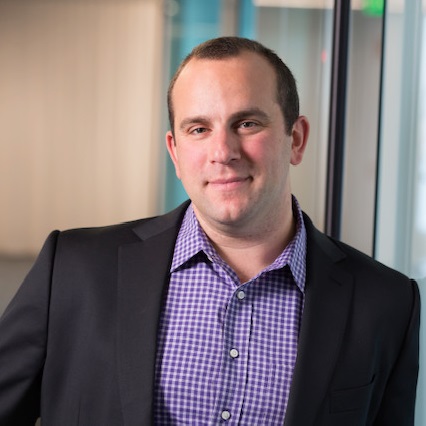Episode 4 of the Medical Affairs Unscripted podcast series recorded by Zipher, now part of Lumanity
As the Medical Affairs Unscripted podcast series continues to distinguish medical affairs as one of the major pillars of biopharmaceutical organizations, Dr Peg Crowley-Nowick hosts Dr Adam Schayowitz, an industry veteran and current Vice President and Medicine Team Lead at Pfizer, to discuss the intersection between medical affairs (medical) and clinical development (development) with regards to data generation as medical continues its evolution as the third pillar in industry.
Dr Crowley-Nowick draws on Dr Schayowitz’s expertise, which crosses both medical and development, to get his insight on the potential impact medical can have on development programs, in particular supporting the data generation program. He answers questions regarding cross-functional strategies for data generation, such as what and how medical contributes, when the development team should be engaging with medical, where medical can help accelerate development programs, and more. The host and expert guest discuss the advantages of using this broader team to identify, prioritize, and address data gaps.
Also, Dr Schayowitz shares his recommendations on how medical affairs intersects with clinical development in the planning and execution of a data generation strategy and its implementation throughout the lifecycle of an asset.
Lastly, the podcast closes with Dr Schayowitz’s experience in his shift from medical to development and the value of having medical aligned with both the development and commercial organizations with regards to data generation.
Podcast Series: Medical Affairs Unscripted
Hosted by Dr Peggy Crowley-Nowick, in Medical Affairs Unscripted we explore a range of topics related to the strategic role of medical affairs from the perspective of industry experts. Through these conversations with our guests we will share first hand experience to provide the listener with insights and knowledge about the evolving role of medical affairs.
Podcast transcript
Peg Crowley-Nowick 0:13
Welcome to the first season of Medical Affairs Unscripted. I’m your host, Peg Crowley-Nowick, President and Founder of Zipher Medical Affairs, a full-service consulting firm. During this podcast, we’ll explore a range of topics related to the strategic role of Medical Affairs from the perspective of industry experts. Through these conversations with our guests, we will share firsthand experience to provide the listener with insights and knowledge about the evolving role of Medical Affairs. Please stay tuned at the end of the podcast to learn more about Zipher.
Welcome to this new episode of Medical Affairs unscripted. Today, I’m joined by Adam Schayowitz, who’s Vice President and Medicine Team Lead at Pfizer. We’re excited to have you today, Adam, because today we’re going to discuss data generation, the role of Medical Affairs and the intersection of Medical Affairs with clinical development. I have had a lot of time to think about how Medical Affairs can really play a role in clinical development; And as we hear more and more about Medical Affairs becoming the third pillar in the pharmaceutical industry, it becomes more critical to understand really, how do you get the impact of medical in the development program? And where are they really contributing from a data generation perspective, I think the regulatory pathways have changed quite a bit in the last five years. And there’s more and more opportunities for medical to make a difference. So, I’m excited to have a chance to talk to you for a little bit about this topic. And it’s something that I think you know, quite a bit about not only in your role as the lead for development at Pfizer, but also from the fact that you have spent time in Medical Affairs. And that’s a unique perspective to bring to this discussion. Before we get started, I would love to take a couple of minutes and talk to you about that aha moment that you had when you started in Medical Affairs. And we met maybe almost 12 years ago, when you were just thinking about a career development path and talking to me about Medical Affairs and what that career would look like and what you might be interested in doing. And it’s hard for me to imagine so many years have gone by, but during that time that you joined Medical Affairs, I’d love to hear about the aha moment. And when you found out that medical could make such an impact on both the company and in the lives of patients.
Adam Schayowitz 2:49
Yeah, absolutely. Peggy and first of all, thanks so much for the opportunity to join you this morning. It’s awesome. And it’s been fun to watch your organization grow as kind of my career has as well. So, kudos to you on that. You know, so I think a couple of things in terms of the actually I should say, but so before we get too far into this, you know, I think it’s important to appreciate that, what I’m speaking half and what I’m speaking of today really represent my own ideas, and they don’t represent Pfizer or the organization. So, that’s, that’s important for everyone to appreciate. You know, with that said, you know, my aha moment for me, it was at a weird a small to midsize biotech company, you know, I was probably one of the first three or four on the initial Medical Affairs team. And we built out this organization, and I just had this epiphany for how valuable a Medical Affairs team could truly be. It wasn’t it didn’t happen at the beginning right there, it really kind of happened after six or 12 months of the organization starting to get built, because we had just really strong functional leads, whether it was in the communication and education side, or the field medical side, or the data generation side, or the health economics and everybody or the operation side, for that matter. And everybody was really working well together. And it was you know, it’s hard to describe it. And it’s but it was an aha moment for me because I saw the value that a strong Medical Affairs team can bring to an organization how we can support the commercial side of the business and you know, what was a pending launch, how we could support the development side of the business and generate data, how we could support the you know, the PR IR side of the business in terms of communications and publication. And then the payer and access side of the business with the health economics, like it really was this, this epiphany because it was like, wow, Medical Affairs is really or can be if done right, is in the middle of the intersection of all these important functions that support, you know, both small and big companies. So, it was a really good moment for me at that point.
Peg Crowley-Nowick 4:46
It’s a great example because if you think of Medical Affairs as being just this little silo and has tactical activities that it does to support other organizations, you miss out on all of that impact, and you miss all of those intersections that you just spoke of. So, it’s great to see what you learned in Medical Affairs and how you learned that early in your career. And I’m sure that’s something that you’re bringing over into the development role today. Can you give me a little bit of a brief background on your career path?
Adam Schayowitz 5:16
Yeah, absolutely. So, you know, I started off academically, actually even backing up further than that I really as I finished undergraduate, I started off with a consulting firm. It was a small biotech M&A group, and we really helped companies big and small, you know, figure out, how do we how do they value new acquisitions? How do they value their portfolio? How do they build franchises, we really did kind of that traditional business development, M&A work for both big and small companies? And from there, I kind of knew that I wanted a career in industry. And, you know, as you know, both my parents were in the industry. So, it was, it was a natural progression, I think, at some point for me, and a dinner table conversation for many years. So, it wasn’t, it wasn’t totally foreign. I went to graduate school, I ended up pursuing a scientific degree or a PhD in Oncology Drug Development, and then a business degree as well. And then crazily enough, because I didn’t know any better, you know, started an oncology, molecular diagnostics company with a few, a few folks from Hopkins that I went to school with, and really kind of built and started a small biotech for what was a better part of five or six years in the molecular diagnostics space, and established partnerships with big companies and, you know, raised money and all that good stuff that comes with a young and fledgling organization. And then from there, moved up here to the Boston area, and then worked for a slightly larger organization within Medical Affairs, really kind of starting to build out the Medical Affairs organization, in particular, on the communication and education side of the shop. And then we were acquired by a larger organization. And after that, went on to lead a Medical Affairs team for a number of years. So, I was lucky to have that opportunity to really lead a lead the function, you know, and then as I had spent about two or three years leading an organization within Medical Affairs, I realized that while medical for me personally was, you know, probably near and dear to my heart, I really was interested on the more on the development side from a long term perspective. And I made that transition because of the work that I had done in Medical Affairs over to the development side of the organization. And since then had been running development programs and development teams pretty much exclusively in oncology, both at small to mid-sized companies. And now, as you said, most recently, at Pfizer, which is where I currently am.
Peg Crowley-Nowick 7:36
I think it’s always so fascinating to ask people about their career journey, because nobody has a direct path to Medical Affairs, or in this case development. But anybody who seems to go through Medical Affairs, takes a roundabout route and brings lots of different skills to the table. And sometimes that’s lost, and people don’t realize all of the other skills that Medical Affairs professionals have. So, yeah, that’s a great story.
Adam Schayowitz 8:02
I think, if you don’t mind me just adding a minute. I think that it was because people ask me all the time, how did you make that transition from Medical Affairs over to development? Right. And, and I actually is, I’ve told people it was, it’s because of what I learned and did in Medical Affairs that I was able to make that bridge. Right. And I think it’s a value because the way I think about, you know, what I do, and I think a lot people should think about development, you know, is with the commercial focus, it has to be understanding the market and the competitive landscape, and the dynamics and all those things that we did in medical, you know, were things in aspects that I bring into development. And it’s a very different focus than someone who comes into development, whether it’s through a regulatory path or an earl-, none of these are wrong, with just different paths, whether it’s regulatory, or science, or the bench or early development or otherwise, like it’s a different approach, I came at it, you know, from late stage commercial experience, truthfully, through medical, which has kind of given me an interesting angle as I built my career in that space.
Peg Crowley-Nowick 9:04
But you also bring a business perspective. So, that does play into your thinking and probably your strategic approach is also guided by the fact that you have a business background.
Adam Schayowitz 9:15
Yeah. And again, back to the Medical Affairs space. I mean, you know, the medical organization is supposed to, you know, to work closely with and support and partner the commercial side of the business. Right. So, all those things that we that I learned and that we did in Medical Affairs were definitely things that have influenced my career. I mean, it’s not, I don’t think it’s coincidental that everything I’ve done in development has been late stage, right. Like I really haven’t spent a ton of time doing any early development. I mean, I’ve certainly seen it but any first in-human IND enabling work has been stuff that I haven’t really been privy to. The stuff that I have done has been, you know, late-stage registration, early commercial lifecycle management stuff and probably because it’s where my interest is and where my experience was coming into, into the development space.
Peg Crowley-Nowick 9:59
Sure. So, right there, it’s probably a great transition into discussion about data generation, because I would imagine, if you’re working in that late-stage space, you’re looking for data gaps, you’re thinking about what’s going to influence decision makers. Once this drug is approved, it’s not just about getting approval, it’s about looking at the whole picture of the future and the commercialization. So, I think that’s a great transition into our discussion of how Medical Affairs really can play a role, one in data generation and two, in supporting the clinical development strategy and programs. So, I’d love to start immediately by talking about the data generation piece of this and what Medical Affairs does to contribute from a data generation perspective.
Adam Schayowitz 10:47
Yeah, I mean, we think we think lots about how do you build a franchise, right? It’s not, you know, one program, one drug and one program doesn’t build as, well, doesn’t always build a successful business. I mean, it certainly can. But you typically need more than one clinical trial and one drug to have a truly successful organization, or at least a franchise, you know, from a Pfizer perspective, and not even just a Pfizer perspective. But from an organization perspective, as you think about building a franchise. It involves multiple clinical development programs, it often involves, you know, it’s anchored into one asset, one program, but it has, you know, many other combinations, whether they’re internal partners, internal drug candidates, or external partnerships that you’re building on in a canvas is, you know, multiple aspects or spots in the treatment algorithm. So, you really have, if you will, like a blanket of clinical development programs that help build your ownership of that space. There is no way that a development program alone can do that. And there’s no reason that a developer program should do all of those things. And this is where it becomes so close to Medical Affairs, because, you know, we work super, super closely with our Medical Affairs colleagues to figure out strategically, how do we generate data for the franchise? What’s the data that we want to generate? When I say we within the development team and the development program that are typically company sponsored trials that often are label enabling or are seeking some kind of registration intent. But then how do you support and supplement that with lifecycle management of whether it’s, you know, investigator initiated trials or IIRs, ISPs, whatever you want to call them, or whether it’s phase four clinical development programs, or whether it’s real world, you know, evidence or real world data analysis for the HEOR front, whatever it may be, if there’s a ton of data generation that the Medical Affairs team does and can do to help them support the development of the franchise? And I think this is why I was excited to chat with you today. And this is a super important topic to figure out. How do we how do you help a development organization align with a medical organization to collectively build a franchise?
Peg Crowley-Nowick 12:57
In thinking about those different types of data generation opportunities? When does it come in? When do you start that planning? And when should medical already be engaging in that aspect with the development team?
Adam Schayowitz 13:09
It’s a great question, you know, as early as possible, I think is the short answer. You know, you don’t always have that luxury, right? I mean, a lot of times the development, I mean, if you’re talking about the first indication of the first opportunity on the market, the development team has been up and running for years building, working towards a registration program. And then the Medical Affairs team is typically built, you know, prior to launch, you know, within a reasonable period of time. So, it doesn’t always happen in parallel. But I think the sooner the better, would be my advice, right? The more that the sooner you can look at, you can help develop and crystallize your franchise strategy. And you can look at this, and you could say, holistically, these are the things that the development organization should own. And these are the things that the Medical Affairs organization should own, and then each function is able to implement them, you know, with the awareness of the other, the better. You know, I mean, too often, we’re in situations where we’ve funded investigator initiated programs that overlap or conflict with our development programs, or we try to run development programs that are better off run as collaborative research studies that could have been done through Medical Affairs, but they just happen to fall in development, because that was the way the organization was structured, or the people the resource that didn’t exist when it was done. So, you know, the sooner the better, I guess, is the short version to your question.
Peg Crowley-Nowick 14:28
Well, in your career, do you? Have you seen a development plan that also includes a Medical Affairs data generation program built into the development plan?
Adam Schayowitz 14:38
Yeah, that’s a good question. I don’t actually know if I’ve ever seen it as part of the development plan, per se. I think I’ve seen it more as part of the franchise strategy, as I was talking about a little bit earlier. Right. I mean, the development plan, I guess, like there’s two ways you have to think about it. There’s two ways I think about this. I mean, the development plan typically is going to be clinical development that leads to label enabling registration programs or study that support the registration. You know, the registration indications, that last piece, the supportive studies, is where it gets a little blurry between what development does and what medical does, because medical should do a whole lot of stuff that supports the development program, kind of that last piece, but then also, you know, has the flexibility and freedom to do all kinds of things that development wouldn’t take on necessarily, but that can support the franchise and the organization as a whole. So, you know, when, I guess maybe I’m getting a little caught up in how you what you’re calling a development plan, and how you how you label that. I mean, I think of it as you know, as you said before, I mean, within Pfizer, we consider it a medicine team. So, I think of a more of a medicine plan. And the medicine plan absolutely includes what development does and what Medical Affairs does in terms of data generation. But the pure development plan, or what clinical development plan is different from is really just the document or the program that is run within clinical development. Does that make sense?
Peg Crowley-Nowick 16:05
That does make sense, in my past career, I’ve seen that as the development program progresses, and we’re getting a little bit closer to a point where you’re heading down that regulatory path, and the phase three is maybe coming close to data release, that’s when there is integration of the medical plan into the development plan. So, that might be something different, because that really becomes lifecycle management.
Adam Schayowitz 16:31
Exactly. I think a lot of it is just semantics as to you know, the organizations that we’ve been a part of and where we come from, but at the end of the day, I mean, what I think you and I both agree on or align on is that whatever you call the plan, you know, there should be a well-integrated strategy for data generation between that that is internal, and that which is external, and the internal is probably owned by the development team. And the external is owned by the medical team, for the most part, right?
Peg Crowley-Nowick 16:58
I would say so except when you think about secondary analyses.
Adam Schayowitz 17:02
Yep.
Peg Crowley-Nowick 17:03
Maybe HEOR. Some of that might be a little bit different. I think the key here is that integration of the different types of research as you’re progressing into the lifecycle, and I’ve worked with an awful lot of companies in the last 12 years. And I don’t see this very frequently.
Adam Schayowitz 17:22
Yeah.
Peg Crowley-Nowick 17:23
It’s very separate, the medical planning, and the development planning in lifecycle seem very separated. And I think that in the past, it was closer together than it is right now. And yet, you see commercial plans and Medical Affairs plans, kind of aligning and making sure everybody’s thinking that way. But if you can take care of today’s challenges, but you’re missing the future. If you’re not thinking about it from the development side also.
Adam Schayowitz 17:51
I’m curious, from your perspective, why do you think that’s the case? Like what do we collectively do wrong? Where we don’t seem to integrate medical with development as much as we haven’t seen historically, or, you know, what, what gets in the way?
Peg Crowley-Nowick 18:03
I think some of it is the leadership perspective of not recognizing the capabilities of medical and how you can bring those pieces in and what that means long term. But the other pieces goes right back to what you said your responsibility is to get that regulatory approval. Anything that interferes with that, or slows you down, because you’re taking time to work with other people can cause problems in your own metrics, right?
Adam Schayowitz 18:26
Yes.
Peg Crowley-Nowick 18:26
And in many cases, the Medical Affairs team is seen as part of the commercialization and not thought about in the future development pieces.
Adam Schayowitz 18:34
Yeah, I guess this is where my bias of having grown up in Medical Affairs perhaps helps bridge that, you know.
Peg Crowley-Nowick 18:35
Exactly.
Adam Schayowitz 18:40
I guess I go there first, right versus somewhere else.
Peg Crowley-Nowick 18:43
Exactly. And I think that there needs to be a nice balance. And if Medical Affairs is really to be the third pillar, then they have to be able to work in both directions. The second part of that is that the Medical Affairs professionals have to recognize what it takes to get through a development program, and that you can’t have things get in your way, you have to keep going forward, you need to understand where there are gaps, but things just have to keep moving.
Adam Schayowitz 19:07
Yep.
Peg Crowley-Nowick 19:07
So, that also comes to the other piece, because I think that I see that development want some help, maybe need some help. But when they’re asking for it, they’re asking very little of the Medical Affairs organization. So, when we’re talking about this, maybe a little bit of site identification, but oftentimes they don’t even want that.
Adam Schayowitz 19:26
Yeah.
Peg Crowley-Nowick 19:26
They have already moved with a CRO and they’re going to identify their site’s enrollment. There’s concern if you’re bringing in your field medical team or Medical Directors to talk about educating on mechanism of action, building excitement, that that will cause confusion with the CRA is and some challenges there. What is your opinion on where Medical Affairs can step in and really make a difference to accelerate a program?
Adam Schayowitz 19:50
So, I’m glad you asked. There’s a ton of value that Medical Affairs can bring to that, we’ll call it kind of clinical operations side of the business right in terms of helping us run programs. But appreciating the fact that, you know, sometimes it can be a territorial space and whether it’s clinical development who wants to hold it close, or whether it’s the CRO that doesn’t want to have to navigate with yet another party from the organization or complexity and confusion around how many people you sending into the site, whatever maybe, I can fully appreciate the reasons why you don’t, why people would be reluctant to engage your medical team. But I think it’s, I think it’s important that people really do think through and appreciate the value that a medical team can bring into an organization that is in that kind of, the trenches of clinical operations and clinical enrollment. I mean, I have I’ve seen firsthand site, you know, site active- not official site activation, but like excitement and energy of a site, a clinical trial site, and directly related to patient enrollment, that can be completely tied to the time and effort that the Medical Affairs team invested into educating that site, whether it’s the research nurses, the physicians, the investigators, or whatever it may be on the on the clinical trial, the drug, the background, the opportunity, the goals, and, you know, whatever it may be, you know, in terms of education and awareness and communication, when it’s done from when it’s done, right, and done right through the appropriate field medical people, I’ve seen it add in, you know, a tremendous amount of value — far more, and I’ll be careful here, but far more than I’ve seen some CROs add value from that perspective. And I, you know, this is where I go back to that adage of like, it’s the people that are within the organization probably know the business better than anybody else. And it’s, you know, it’s just so much easier when you’re the one speaking on behalf of your organization versus somebody else. Now, that’s not to say that CROs don’t do a tremendous job. They absolutely do. And they’re the bread and butter of the industry here for this. But there is definitely value that medical can add to that. In that perspective.
Peg Crowley-Nowick 22:03
There’s another part to that is the continuum of the people that you’re engaging with. So, Field Medical early helping with enrollment. It’s not about the operations of the trial, it’s about the excitement that’s generated. And at a site, they have many other trials, many other groups that they could be working with, if you’re not in there fairly frequently or talking to, not bugging, them about enrollment, but actually talking to them about the excitement, then your prioritization in their list starts to drop. So, what we find is if every three months, somebody has a contact with them from a scientific perspective, it pops your trial up to the top again, and maybe that patient walks in that day, and you get your enrollment. And we’ve actually seen it directly with some of our teams that are working to help support enrollment.
Adam Schayowitz 22:52
Yeah.
Peg Crowley-Nowick 22:52
But I think that there’s always that challenge of making sure that everybody understands roles and responsibilities, not stepping over. But what I wanted to make a point of is that continuum of having your field medical team already engaging there, eventually those sites become potentially your thought leaders who will be out talking once you’re moving to commercialization. Having those relationships built early and having a big group of people involved certainly helps later. So, it’s about a continuum, not about a single action that’s taking place.
Adam Schayowitz 23:26
Yeah, no, I mean, I agree a hundred percent. I mean, I was gonna say the same thing. So, well, a couple comments on what you were saying, first, the, you know, what we were talking about the, you know, the education and the scientific exchange, I mean, that’s where Medical Affairs really brings value. And in my experience, that’s where the clinical operations teams are not as threatened when you’re talking about going in there and discussing the science or the rationale for the clinical trial, or the competitive landscape or that kind of stuff. I mean, you’re not when you’re not talking about, you know, the granularity of you know, whether it’s CRS, or whatever it is for clinical trial enrollment, and you’re talking about scientific exchange, I mean, everybody’s staying in their swim lane, and it can be a win-win there. So, I agree with you on that piece. And then I also really agree with you on the continuum of the engagement, right? I mean, as you said, don’t forget, I mean, these investigators who are enrolling trials, you know, on behalf of the organizations and companies are going to likely become the authors that are going to publish the publications, the speakers that are going to speak from the podium at the major congresses, and they’re going to become, you know, those that are training if you do a speaker bureau that are training, you know, physicians and other faculty to speak on your behalf. So, having that continuum of communication is super important in building those early relationships, like hands down, that’s very important, but also it shouldn’t be discounted, that that continuum, you know, helps align the physician with the I don’t want to say the messaging but the you know, the communication style and approach, you know, and content from the organization. And that’s not all, that’s not always to say that every physician is going to say exactly what the company wants, because that’s not the case, nor do we want that. But I do think it helps the physicians that are eventually going to become key thought leaders in the area for the trial or otherwise, you know, become really aware of what’s important from the organization’s perspective, and the goals of the clinical trial, and you don’t ever get it, where you mitigate the, the chance of getting somebody you know, up on the upon the podium or speaking on behalf of the organization who goes rogue, you know, and starts talking a lot about the organization or saying things that don’t align with the strategic directives of the program or of the company.
Peg Crowley-Nowick 25:43
Absolutely, it’s about that long term engagement, and knowing the data inside and out. And that can only happen from continuous interactions and great data. Obviously, if it’s not great data, nobody’s really gonna read or pay attention to it. But we’re going to assume that it’s all great at this point.
Adam Schayowitz 26:00
Yeah.
Peg Crowley-Nowick 26:02
Could we change direction just a little bit and talk about identification of data gaps? And what you think about from clinical development perspective, how you utilize a broader team to identify those gaps, and then what it means from a Medical Affairs perspective?
Adam Schayowitz 26:22
Yeah, I kind of touched on this a little bit before, I didn’t get into the details, but we look at building a franchise strategy. And we look at all the different holes that we want to fill, we look through a couple of collectively, the team, the cross-functional team that includes medical looks through a couple of different lenses. And those lenses are one of those lenses, how do you best fill this gap or address this piece of information. And there’s typically more than one way to do so, you know, there’s often instances where you could, to fill a data gap, you could run a company sponsored trial, you could run a CRC — a collaborative research program with a partner or with a SWOG or an EORTC or some kind of Consortium, or you could generate that data through real world evidence, or you could run just an IST or an IIR and have it be investigator led, right. There’s lots of ways to fill that data. You know, I think, to your question, when we think about this holistically, we try to look at what opportunities make the most sense for the company to own and run, which opportunities make the most sense for medical to own and run. And then which aspects of medical make the most sense to run it? Like, is this something that we could do some data analysis, and it could be, you know, simple, you know, some stats getting together with the Medical Affairs publication team, and, you know, in generating a publication to fill the gap? Or can we fill the gap with, you know, retrospective data that we leverage, you know, real world evidence or real world data from? Or do we need to prospectively generate that data? And if we need to prospectively generate, do you want the investigator to own it through an IIR? Or do you want the company to own it through a CST? Or something in the middle, we kind of use all those different filters to figure out what makes the most sense.
Peg Crowley-Nowick 28:13
So, those are the filters of how I’m actually going back to what are the gaps and as a leader, how do you approach identification of the gaps? Who should be involved in gap identification? And then probably more importantly, because we all know, there’s lots of gaps, but what’s your thought process on prioritizing those gaps?
Adam Schayowitz 28:35
Okay, so good question. Apologies there. So, when you think of identifying the gaps, so, this is the advantage in my mind of having a matrix team in an organization, right, we call it a medicine team, an asset team lead, a development team, you know, any of those all basically do the same thing, depending upon the organization that you’re in. That team has representation from clinical development, from Medical Affairs, and from commercial, those are kind of the three key functions, it also would include regulatory support, it would include, you know, Pharmaceutical Sciences, or manufacturing, CMC, and may include other aspects, depending upon the nature of it. You need, in my opinion, that cross-functional team to help identify those gaps, because everyone’s going to look at things a little bit differently and come with their own bias. And it’s the collective cross-functional input that helps really crystallize what’s important.
Peg Crowley-Nowick 29:34
How frequently would you take an assessment?
Adam Schayowitz 29:38
So, your question, so this is, you know, it’s trying to think so, we I would say that it depends on the lifecycle of the asset in some ways, right? I mean, if you have a mature asset, and you’re really just looking about lifecycle management, you know, it could be done, you know, once or twice a year formally, and then just kept kind of current. As the landscape evolves, and you figure out what you’re doing, if you have a more immature asset that is recently approved or soon to be approved, and you’re trying to figure out how else to generate value, you know, I think that’s probably happening on a quarterly basis or a couple of times a year to figure out, you know, what are we doing? How are we generating the most amount of value what we have, you know, and then and then early on in its development, as you’re trying to think about what the registration, the initial go to market registration strategy is? You know, that’s, that’s a constant conversation of, you know, where do we go and what makes the most sense? You know, I think in some ways, for the purposes of this conversation, though, there’s, in my opinion, there’s far more medical involvement in the data generation aspects for assets that are more mature than not, right, that doesn’t mean they all have to be approved. But the more lifecycle planning you get into the more medical can do to support it. That’s not to say that we won’t run, you know, Medical Affairs, data generation studies for pre-approved assets, but it just becomes a little bit more challenging as you’re navigating the regulatory environment to have a whole bunch of things out there.
Peg Crowley-Nowick 31:06
And risky.
Adam Schayowitz 31:09
You’re right. Like, what if you generate a safety signal or you find an issue and you know, it does something to jeopardize your ongoing registration program? That’s not an ideal situation.
Peg Crowley-Nowick 31:20
So, when you’re looking at gaps, looking at what you’ll need for the future, you’re taking insights that are gained from the field, you’re looking at the landscape? How do you approach the situation?
Adam Schayowitz 31:32
Yeah, so this is where the field medical team is the eyes and ears of the organization, or can be the eyes and ears of the organization, right? And it’s not just field medical, but field medical and competitive intelligence, it depends upon where CI lives in your company, right? I mean, CI could live in commercial development. So, it may be both parts of the organization there. But really, I mean, it’s insights from the from the field medical team, its insights from the congresses that are gathered from whether it’s field medical or competitive intelligence, and then the competitive intelligence that’s assessed and kind of the evolving, you know, clinical landscape and clinical dynamic. It’s really all those pieces that come together, you know, and looking at, you know, where is there, you know, and actually, the other piece to consider is also the non-clinical side of the organization too here, right, which is a little off topic for us. But, you know, we have our non-clinical group generates a ton of data and signals up better that we often look at and say, hey, is this something we want to explore? So, it’s kind of all of those, you know, just to see, you know, what’s out there, what’s evolving? You know, what data is promising? What are physicians interested in talking about? Where are their opportunities? And then how do we incorporate them.
Peg Crowley-Nowick 32:55
So, it’s not simple, it’s not straightforward. There’s a lot of moving pieces that are plugged in here. And the timing is important, because lifecycle makes a difference as to what you’re doing, what you’re looking at, and how you’re, you’re thinking about this. But I think that the most important is that this is a multifunctional team working together to decide on the gaps, identify the best way to fill them, make sure that you’re eliminating as much risk as possible for the regulatory program.
Adam Schayowitz 33:25
Yeah.
Peg Crowley-Nowick 33:25
And then executing.
Adam Schayowitz 33:31
Absolutely.
Peg Crowley-Nowick 33:27
And you could spend all your time thinking about the gaps and thinking about how to execute, but actually doing it is the trick, right?
Adam Schayowitz 33:35
Yeah, absolutely. You know, and it’s, as you said, it’s never done, right. It’s always a work in progress. And, you know, as you’re executing, you’re evolving, and, you know, you’re just kind of perpetually, and continually refining the strategies as the world evolves around you. And, you know, especially in oncology, I mean, things move so quick that there’s, you know, there’s always new information available, and you could keep this thing just going 24/7, if you had the resources to.
Peg Crowley-Nowick 34:01
Which, that’s part of the reason why you have to prioritize, and that way, you’re not always looking at everything over and over again.
Adam Schayowitz 34:07
Yeah.
Peg Crowley-Nowick 34:07
How do you approach the prioritization of the gaps or the prioritization of what you need to do?
Adam Schayowitz 34:13
Yeah, that’s a good question. You know, a lot of that is dependent upon the overarching strategy, either of the organization or the franchise, depending upon the size of the company that you’re at, right. You know, in most businesses, or most organizations that have late-stage assets, I mean, the commercial value is one of the larger drivers of the prioritization of filling the gaps, right, like analyzing commercial value. It’s not just as simple as what adds the most commercial value, because the most commercial value may also be the riskiest path and take the most amount of investment, right. So, it’s not just we prioritize what has the most amount of commercial value. It’s kind of that balance between Time, like, when do you when do you need this by? Is this something that you could afford to wait three or five years for registration? Say? Or is this something that you need to get out there to the world? You know, yesterday, a balance of time of risk, like, you know, how much risk do you want to take? And what’s the potential overarching harm? If this is negative? You know, you know, should that not turn out the way that you want? And the kind of the risk tolerance? And, you know, cost in terms of how much does it take to actually do this? Right. So, I mean, I do think those I mean, this is kind of your typical project management triangle, but like, you know, whether it’s, it’s time cost and value or time cost and risk in this situation are really the three, three or four things that that kind of help us say, Yeah, we’re willing to take a little bit of a gamble here. But we want a more conservative approach at this point. I mean, I think like, kind of like any, you know, good financial portfolio. I mean, I think you want a diverse plan that has some short-term shots on goal that are low risk, some long-term shots on goal that are high risk, and something in the middle. But you know, not only that, what’s important is to make sure that you’ve got a constant flow of data of information and content to be present in the market at all time, right, like having one big splash and then basically going radio silent on the data front for five more years and betting on another big splash is, in my opinion, not the right approach.
Peg Crowley-Nowick 36:25
And thinking about that, that takes a lot of planning. It doesn’t happen by accident, that you have a nice flow of content and flow of data coming out. So, really important, just a couple more things, because you’ve really shared a lot on not only your thoughts about that intersection, but how things get done. And that’s important for the people who are listening. So, they walk away with maybe a couple of new tools and a couple of new manners to incorporate into their practice. When you moved from Medical Affairs into development, what kind of surprises did you find? What things were not what you expected? When your vision? Because your view for Medical Affairs, everybody forms opinion wherever they come from. What was something that might have been different than you expected?
Adam Schayowitz 37:13
That’s a great question. I don’t think I fully appreciated how dynamic development was, I kind of just, you know, because I’d always seen the late stage aspects of it in medical, I always saw, like the trial is about to read out the trial right out, you know, I never really got exposed to some of the earlier kind of back and forth on the development of the trial and the strategy associated with it. And touching a little bit on what we talked about previously, with how dynamic the landscape is, and how quickly things change. I mean, development plans, you know, one would hope, and one would think, are fairly straightforward and pretty clear. And when you make some big decisions, while they do become cemented… the oscillations in trial designs and in details, you know, as the landscape evolves, or as competitors, you know make different decisions it, you know, we change our mind a lot, you know, and that’s not in any one organization. I’ve been in multiple organizations where, you know, we evolve quickly as the, you know, as the landscape evolves. And to your question, I don’t think I ever fully appreciated how dynamic, you know, development is, or can be at least.
Peg Crowley-Nowick 38:26
I think that’s important to know, so that our Medical Affairs colleagues can look and think about it from that perspective. Yeah, the only piece we didn’t hit on, and maybe it’s important for the people who are thinking of Medical Affairs and thinking about their data generation program, that you can’t one do that independently. And two, you really need to think about how that adds value, how it’s synergistic, and how it’s timely. And that’s a piece that sometimes gets lost in Medical Affairs. And maybe you could give me an example of where you’ve seen either the value come out of a Medical Affairs Research Program, or where it could be lost.
Adam Schayowitz 39:05
Yeah, it’s a good question. I think it actually touches two different ways, right? So, if I just put on my pure Medical Affairs hat for a second, I mean, the value and the timeliness has to be in lockstep with the commercial organization. The challenge is it can’t just be the commercial organization. This is where you’ve got to make sure that you’re balancing the needs of, and I’m biased here, right, because I’m coming from the development side, but balancing the needs of supporting the commercial organization and the commercial side of the business with… to our earlier topic, earlier conversation, the data generation and the development side of the business, right, because there really are there’s it’s hard to within medical, I think it’s it would not be appropriate to define success by purely aligning with commercial or certainly purely aligning with development right like you have to if you or if you’re within, if you’re the leader of a medical organization, or if you’re within Medical Affairs, you know, you’ve got to balance a lot of different pieces. There are others beyond just those two. But for the purposes of this discussion, I think it’s important to make sure that both pieces are adequately supported in, you know, in the implementation of a medical plan. I don’t know if I’m answering your question exactly, though. So, you can ask it again, I can try another shot, if that wasn’t what you’re looking for?
Peg Crowley-Nowick 40:29
Well, I think that that point is really important, because that’s if you’re going to sit as a strategic pillar, you have to balance both sides. Very, very critical to talk about, but I was actually thinking more from the perspective of Medical Affairs research programs that I’ve seen. So, those could have incorporated into them. ISTs could have some phase four HEOR studies, a lot of different things going on. But in, in my opinion, they don’t add value if they’re not timely, and they’re not synergistic with both, I think the development program and the commercial side. So, in some ways, that ties back to what you were saying, we didn’t really talk about that, and the timeliness, and how you evaluate a Medical Affairs program to make sure that it’s maintaining that. And I know you’re, you’re not in medical anymore, but you were in the past.
Adam Schayowitz 41:21
I’ll give you a good example here, because this is something that we wrestle with all the time, investigator-initiated studies take a long time to contract a long time to get off the ground. And the data always takes a long time to generate, and you talk about time leads, again, this is my own personal opinion, but I feel like medical ISTs, or Medical Affairs funded, investigator initiated trials really should be signal generating proof of concept, they shouldn’t be large registration programs, too often than not, you know, and I’ve made these decisions and you know, learn I’ve been in situations where we start, we start investigator initiated programs that read out three to five years later than, than they actually would have been when we need them. And while they’re super important questions to ask, they haven’t been structured in a way or done and been able to be implemented in a timely way, where they really add value to the franchise, they become these things that just kind of hang out there. Because they’re good, because we’re saying, oh, we’re answering this question. We’re asking this question, which is, which is absolutely appropriate, because it’s a gap that we previously all agreed was important, we agreed this is how we want to identify it. But the way that it got implemented, be it through the IST or otherwise was, where there was a disconnect, and it just took too long. And then the problem is, you know, if it takes too long, and then you have to question well, how much value is it really adding to the organization, if it’s not going to be available for X number of years later than we really want it. And that’s we have to look carefully to make sure that your operational plan aligns with the strategy from a timing perspective.
Peg Crowley-Nowick 42:58
So, the reason I bring that up, and I think it’s so important, and especially to bring it up with you is because on the development side, you’re constantly looking at your budgets, how your timing is running, and whether you’re going to make the timelines that you need. Whereas on the medical side, they budget from year to year, and that causes a struggle on the research that they put into place. And then it’s very challenging to go back and change that research program that’s put into place. So, if you had the opportunity to lead again, in a Medical Affairs perspective, would you make any recommendations to someone who’s putting together a research program?
Adam Schayowitz 43:39
Yeah, I mean, you know, I think it’s probably a little atypical for a Medical Affairs organization to think this way, but anchoring to data availability, data publication, primary completion of the data generation project, whatever it may be, is going to be really important. Right? So not forgetting it. You know, I don’t think I did this when I was, you know, in a leadership role, because I hadn’t thought about it enough at that time, but like, really being able to pin to say, this is the question that we’re going to ask, this is how we’re going to do it, which is already done, I’d say well done. And then I think, to your question, and this is when the information will be available, right is though, is that last point, and really, you know, much like, you know, on the development side, we drive so hard to know, we can control it a little bit better. So, it’s different, but we drive so hard to study completion, registration and approval, you know, kind of those big metrics don’t exist within, you know, a lot of the Medical Affairs data generation, but the more that you can kind of create some artificial metrics there, the more that you can tie the data generation to a specific date and then you can almost ensure or guarantee to some extent that it’s going to add immediate or timely value to the organization. Right, which is your question.
Peg Crowley-Nowick 44:56
Absolutely. And that’s something that we encourage all of our clients to really take a look at those timelines and make sure that when the data is available, it still has some relevance.
Adam Schayowitz 45:06
It matters. Yep.
Peg Crowley-Nowick 45:07
It makes a huge difference. So, Adam, thank you so much for spending this time with us. I really enjoyed the conversation. There’s probably so much more that we could discuss. And I will hopefully look forward to having other conversations with you in the future. Yeah. Thank you for joining us.
Adam Schayowitz 45:23
Absolutely. Thank you so much for time was my pleasure really enjoyed it.

Episode guest
Dr Adam Schayowitz
Vice President and Medicine Team Lead, Pfizer












